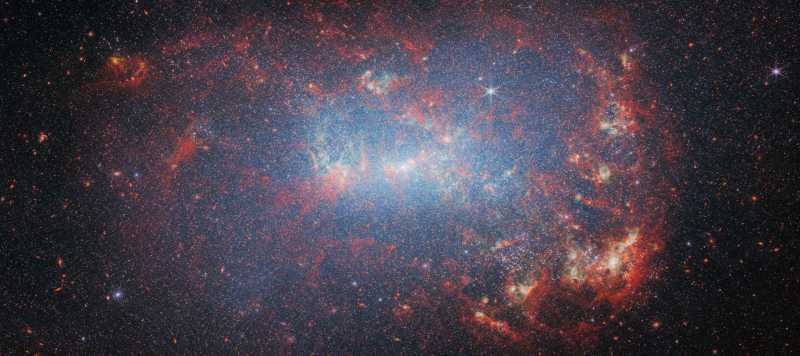“James Webb” Captures The Birth Of stars In A Dwarf Galaxy
Experts from the European Space Agency (ESA) have published a new image of the dwarf galaxy I Zwicky 18, which was taken by the orbiting James Webb Observatory (JWST).
The NIRCam image shows clusters of newly born hot stars against a background of older ones, whose light is indicated by a diffuse blue glow. The bright center is surrounded by dusty swirls that mark star-forming regions in clouds of molecular gas ionized by radiation from clusters of young stars—these clusters are represented by compact blue regions. The MIRI image shows NGC 4449’s dusty skeleton, which appears more concentrated than the material captured by NIRCam. The orange-red dust clouds contain polycyclic aromatic hydrocarbons (PAHs). These molecules are the building blocks of interstellar dust particles and also play a key role in the distribution of organic matter. Bright yellow areas are places of active star formation, and bright blue spots indicate stars in the galaxy.


I Zwicky 18 contains few heavy elements, so astronomers thought the galaxy was very young. Its age was estimated at 500 million years, but observations by the Hubble telescope showed that the galaxy contains stars whose age could range from one to 10 billion years.




